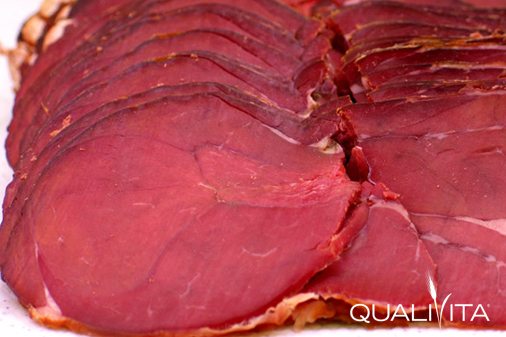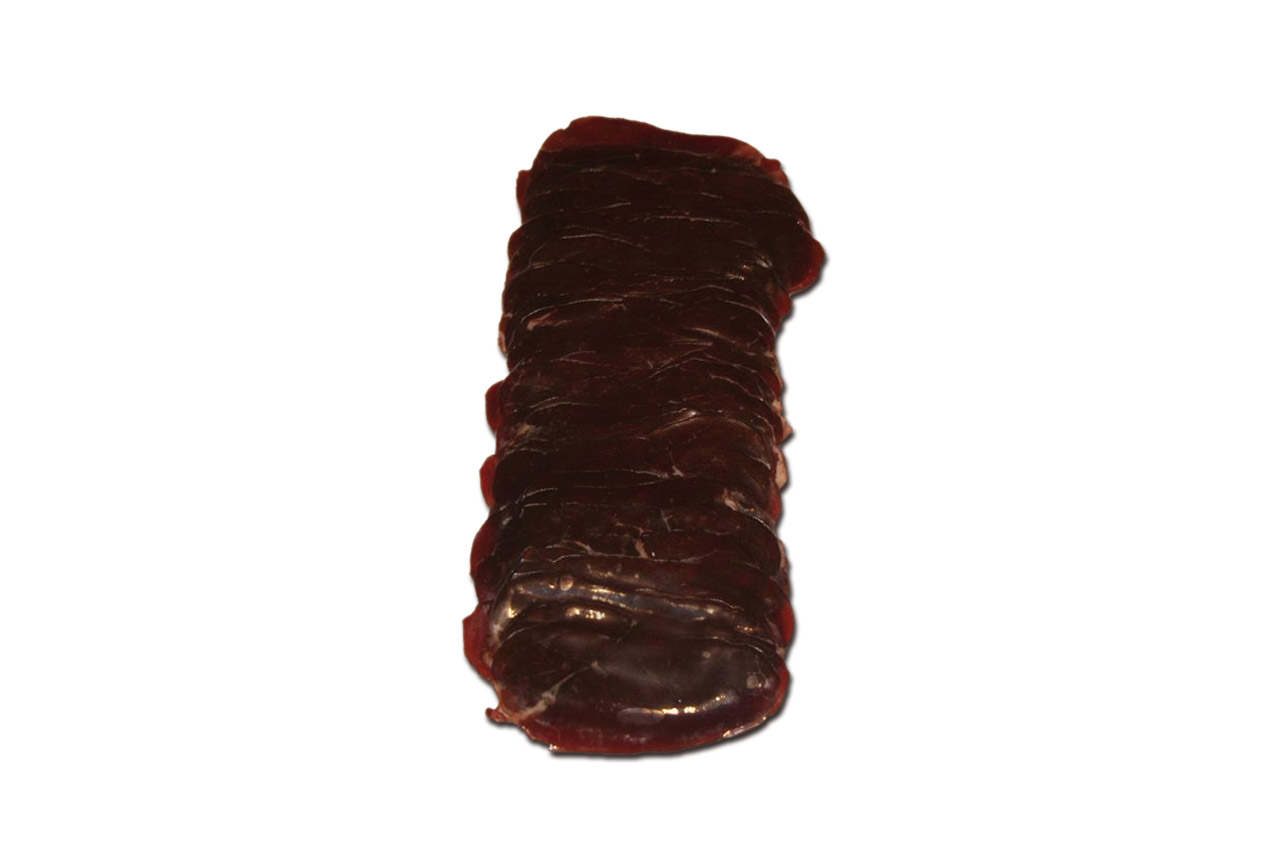Description
Lapin Poron Kylmäsavuliha PDO is a cured meat obtained from cold-smoked Lapland reindeer meat.
Production Area
The area of breeding, production, transformation and packaging of Lapin Poron Kylmäsavuliha PDO includes the Province of Lapland (excluding the cities of Kemi and Tornio and the municipality of Keminmaa), and the municipalities of Hyrynsalmi, Kuivaniemi, Kuusamo, Pudasjärvi, Suomussalmi, Taivalkoski, Yli-Ii, Puolanka, Utajärvi and Yliminki in the Province of Oulu.
Production Method
In order to preserve the integrity of the meat the reindeer thighs, shoulders and fillets are cut into pieces weighing from half a kilo to a few kilos. With the exception of the femur, which can be left in place, the other bones and shank are removed from the rounds; the chucks and fillets are deboned. Each batch of deboned meat is cut into shapes of the same size, thereby ensuring that the production method is the same for each batch. The meat is processed as quickly as possible and in small batches to prevent it from warming up to over 7 °C. It is then salted in a tub or on a rack at a temperature of + 2 to + 4 °C by rubbing layers of sea salt, lactic bacteria and sometimes nitrite into the meat. This stage lasts from between one and two weeks, after which the meat is rinsed with clean, cold water. The maturation process takes about a week and it is done by smoking and evaporation in cold-smoking rooms or cabinets. The smoke is formed by slow-burning alder, birch or juniper chips. Smoking begins about 48 hours after the start of the maturation process so that the product has time to stabilise and the acidity begins to increase. The product is smoked once or twice daily for a maximum of four hours at a time, at a temperature of about + 24 °C. The product is matured for a further 1-2 weeks at a temperature of + 7 to + 16 °C until the weight of the product has decreased by about 30 %. At the end of the post-maturation the product is immediately packaged.
Appearance and Flavour
Lapin Poron Kylmäsavuliha PDO is hard on the surface but a little softer inside. The tissue of cold-smoked reindeer meat is thinner that of hot-smoked meat and this means that it separates easily when chewed. The structure of the cut surface depends on the dryness of the product: the less dry, the more it is shiny. The colour varies from dark red to almost black, with a tinge of light brown and darker edges. The products are succulent with a delicate smoky and slightly salty flavour and the typical aroma of reindeer meat. There is a long-lasting after-taste of smoke and reindeer.
History
The earliest written reference to smoked reindeer meat dates back to the end of the 1700s. There are detailed descriptions of smoking reindeer meat in literature dating back to the beginning of the 1900s.
Gastronomy
Lapin Poron Kylmäsavuliha PDO in its whole form is best kept in a cool environment at a temperature of between 10 and 15°C: a cellar is ideal. The packaged product can be kept on the least-cold shelf of the refrigerator. Before serving, the product should ideally be kept at room temperature for a few hours in order to regain all of its fragrance. It is usually eaten in its natural form with bread.
Marketing
The product is marketed as Lapin Poron Kylmäsavuliha PDO. It is sold whole, in chunks or sliced and packed in food containers of various sizes.
Distinctive Features
Lapin Poron Kylmäsavuliha PDO is more easily chewed in respect to other cold-smoked products.






